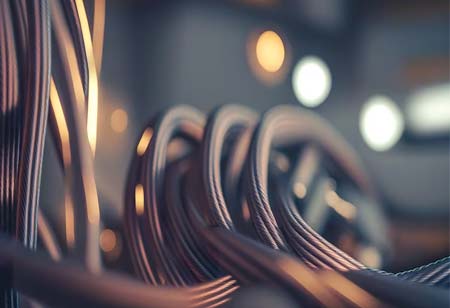Thank you for Subscribing to Electrical Business Review Weekly Brief
I agree We use cookies on this website to enhance your user experience. By clicking any link on this page you are giving your consent for us to set cookies. More info
Unlocking Success: Wire and Cable in Distribution Networks
Wire and cable are vital for modern infrastructure, powering homes, businesses, communication networks, transportation, and industrial operations; distributors play a crucial role.

By
Electrical Business Review | Tuesday, September 30, 2025
Stay ahead of the industry with exclusive feature stories on the top companies, expert insights and the latest news delivered straight to your inbox. Subscribe today.
FREMONT, CA: Wire and cable are essential components of modern infrastructure, powering homes and businesses and facilitating communication and transportation. They are crucial in the global supply chain and are vital for distributors as they serve as the foundation for various industries and applications.
Power Distribution: One of the primary functions of wire and cable is power distribution. Electrical wires and cables transmit electricity from power plants to homes, businesses, and industrial facilities, providing the energy needed to power appliances, machinery, and lighting systems. Distributors are crucial in supplying various wires and cables tailored to different voltage requirements, applications, and environmental conditions.
Communication Networks: In an increasingly linked world, communication networks depend on high-quality cables for dependable and effective data transmission. The infrastructure supporting digital services, internet access, and telecommunications comprises fiber optic, coaxial, and twisted pair cables. Distributors provide communication cables to facilitate the growth of mobile connections, broadband networks, and new technologies like 5G and Internet of Things (IoT) devices.
Construction and Infrastructure Projects: Wire and cable are essential for construction projects, providing the electrical and networking infrastructure for buildings, bridges, roads, and other infrastructure assets. Distributors supply cables for wiring systems, lighting installations, security systems, and HVAC (heating, ventilation, and air conditioning) applications. As urbanization and infrastructure development expand globally, the demand for wire and cable in construction projects remains robust.
Industrial Automation and Machinery: Industrial sectors rely heavily on wire and cable for automation, control, and machinery applications. From manufacturing plants to automotive assembly lines, cables transmit signals, control systems, and power to operate machinery and equipment. Distributors supply specialized cables to withstand harsh industrial environments, ensuring reliable performance and safety in critical operations.
Renewable Energy and Sustainability: As we shift to renewable energy sources like solar, wind, and hydropower, specialized cables must be erected to produce, transfer, and distribute energy. High-quality cables are essential for connecting components and providing renewable energy to the grid in grid-connected energy storage systems, wind farms, and solar photovoltaic (PV) systems. Because distributors offer cables that meet the exacting requirements of renewable energy installations, they play a crucial role in the global sustainability movement.
Transportation and Automotive Industry: The automotive industry relies on wire and cable for vehicle electrical systems, powertrains, sensors, and onboard communication networks. Electric vehicles (EVs) and hybrid vehicles require sophisticated wiring systems and high-voltage cables to power propulsion systems and onboard electronics. Distributors supply automotive wires that meet automotive industry standards for performance, durability, and safety.








